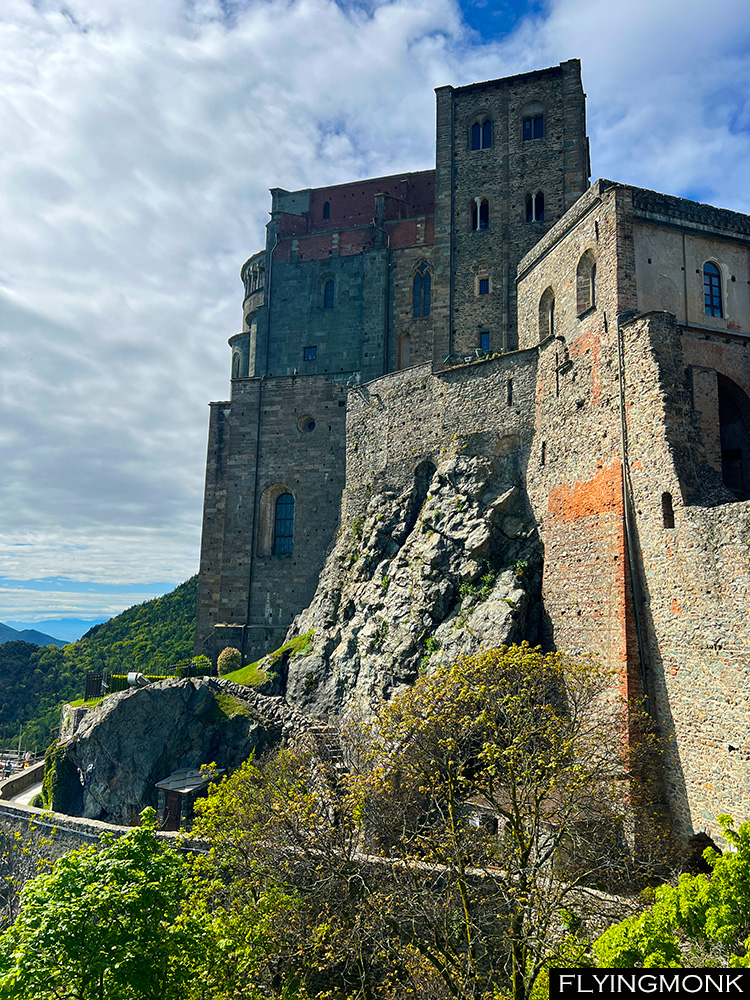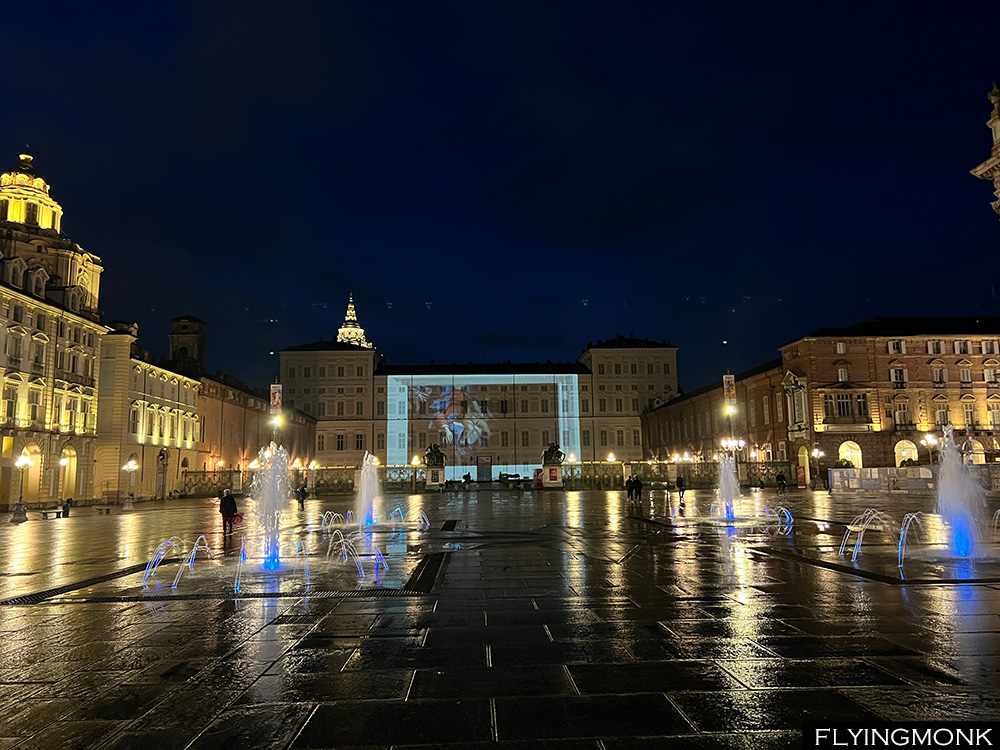
The history of Torino seemed always connected to the House of Savoy. Since 1563 it was the capital of the Duchy of Savoy, morphing further as capital of the Kingdom of Sardinia under the same House of Savoy. It became the intellectual and political heart of the Risorgimento—the movement that led to Italy’s unification becoming the first capital of the newly unified Kingdom of Italy from 1861 to 1865 .
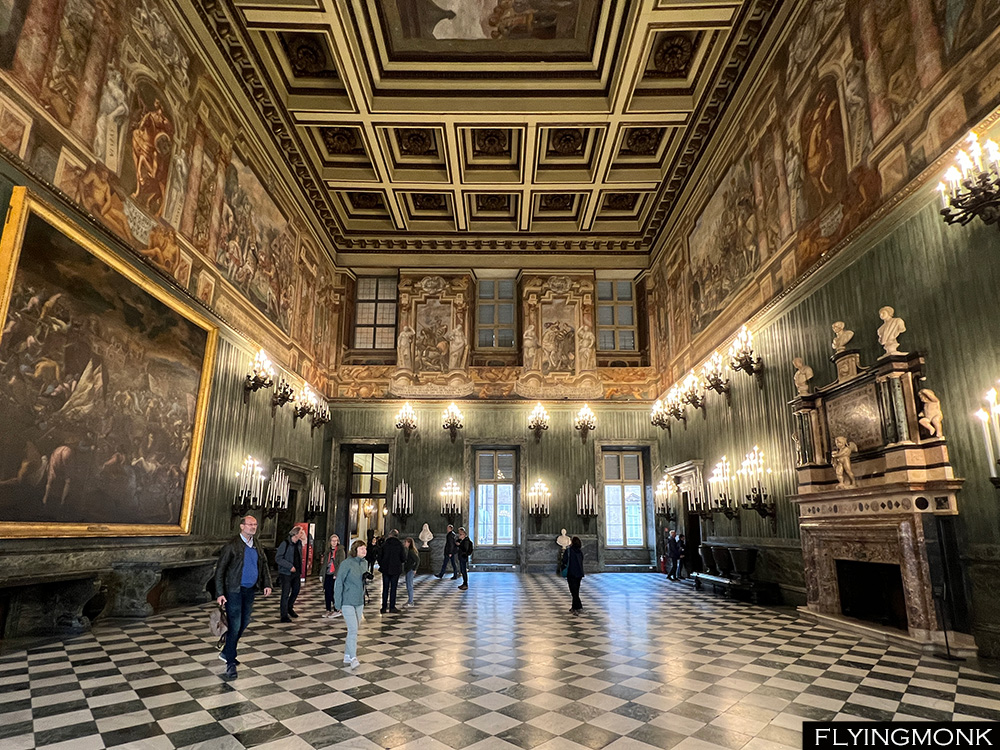
But what stayed in mind it’s the recent history of post-war industrialization depicted in the italian neorealist movies of 1960s, a city of recent Italian migrants coming to a big city to find work in the newly built factories that made Torino a major European nexus for industry, commerce, and trade.
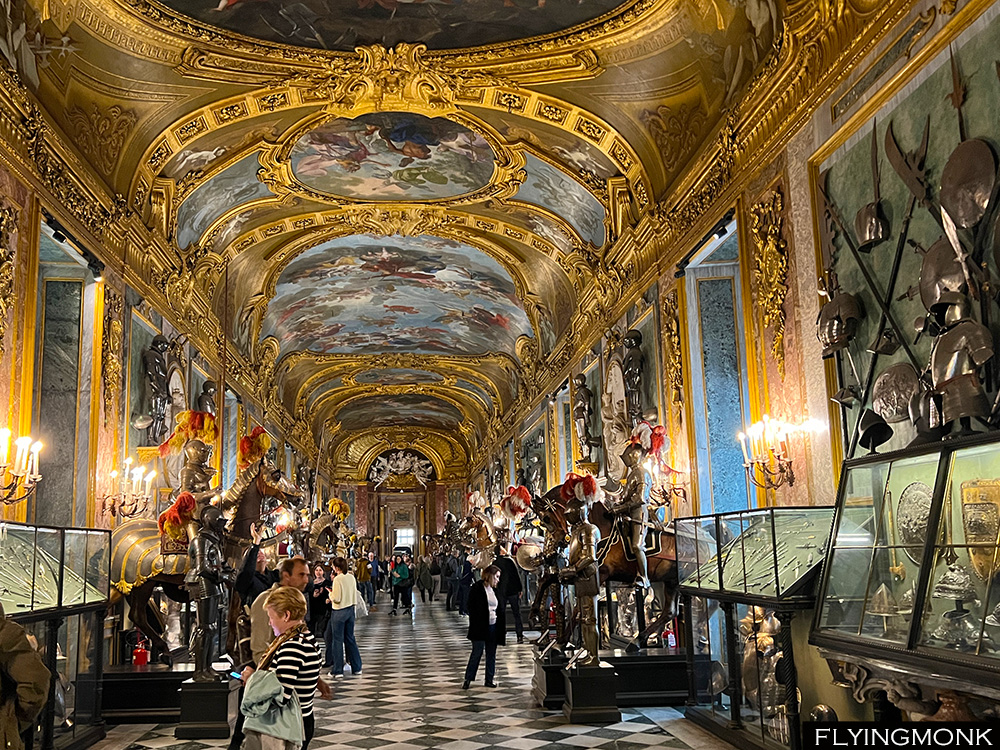
But what you find in Torino is far from the cliches of neorealism, the Italian migrants being replaced recently by African migrants that clog Piazza de la Republica right near Il Duomo and Palazzo Reale whose resplendent collections may keep you busy for an entire day. Galeria Sabauda, Palazzo Reale’ painting collection is a cross section on an impressive array of artworks spanning from the 14th to the 20th centuries with masterpieces by Piedmontese, Italian, and Dutch and Flemish artists. It was perfect visit for our rainy day.

But if you dig a bit in the history of the city you end up on a completely unexpected page: the secrets of the caves on which the palaces, both Reale and Madama, are apparently built, caves where once alchemists were searching for the Philosopher’s Stone under the tutelage of the kings of Savoy. The entrances to these caves remains a deeply preserved secret till today, shared only once by the alchemists with Maria Cristina, wife of Vittorio Amadeo I of Savoy at the suveran’s death.

Why were all these alchemists once congregate in Torino? Most probably because the Savoy kings gave them a pass. But the legends mention Torino’s magical location, situated on the 45th paralel at the confluence of Po and Dora with its tributaries. And to add a little muscle to the story, Appolonios of Tyana, healer and Greek philosopher and a capable talisman crafter somehow left one of this precious magic stones in the Roman colony “Augusta Taurinorum” that became later known as Torino. And of course if you throw a bit of Knight Templars and a whiff of Nostradamus in the mix, you get a fully concocted, well balanced conspiracy that is potent even if we don’t mention the Turin shroud that hides in Torino’s cathedral, also part of the story.
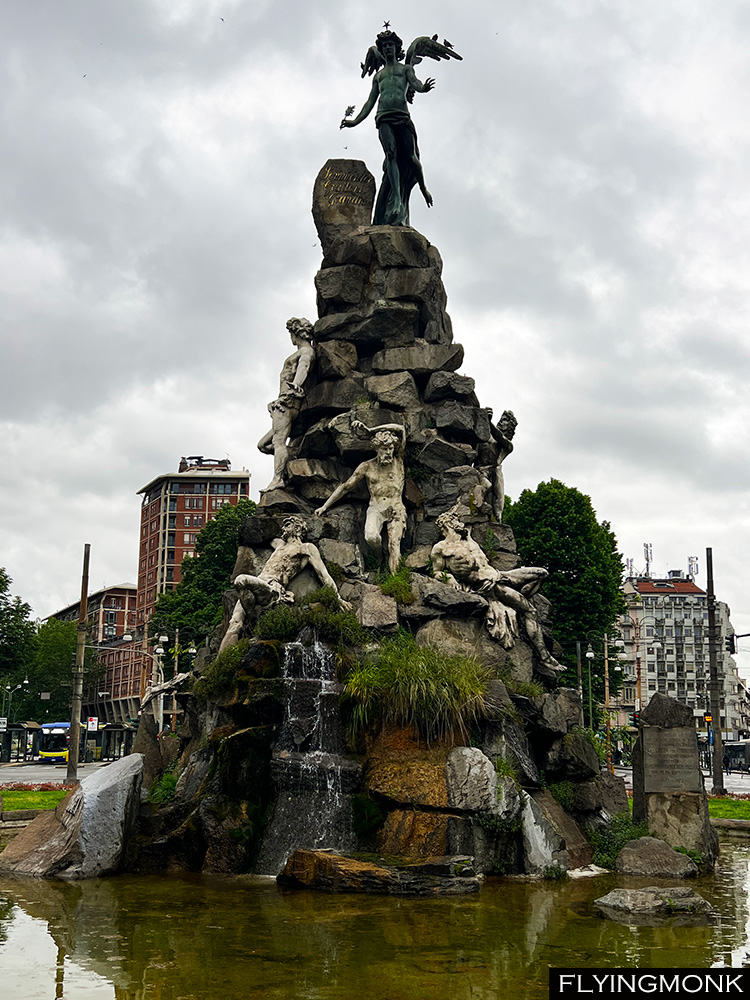
And to make the conspiracy juicier in Piazza Statuto, at the end of the elegant Via Garibaldi. a monument built for the termination of the Frejus tunnel is considered the nexus of a malefic triangle that connects Torino with London and San Francisco ( probably Silicon Valley ahead of its time..). The monument is topped by Lucifer himself whose star, the obvious pentateuch according to the conspiracy, disappeared mysteriously one night. The monument made out of rocks excavated from the tunnel has on it fallen angels that could have inspired Wim Wenders in “Wings of Desire”. Or not… There is also a legend of a white magic triangle that connects Torino with Prague and Lyon that overlaps with the black magic triangle around the church of Gran Madre di Dio and Piazza del Palazzo but its story is less sexy than the malefic one’s.
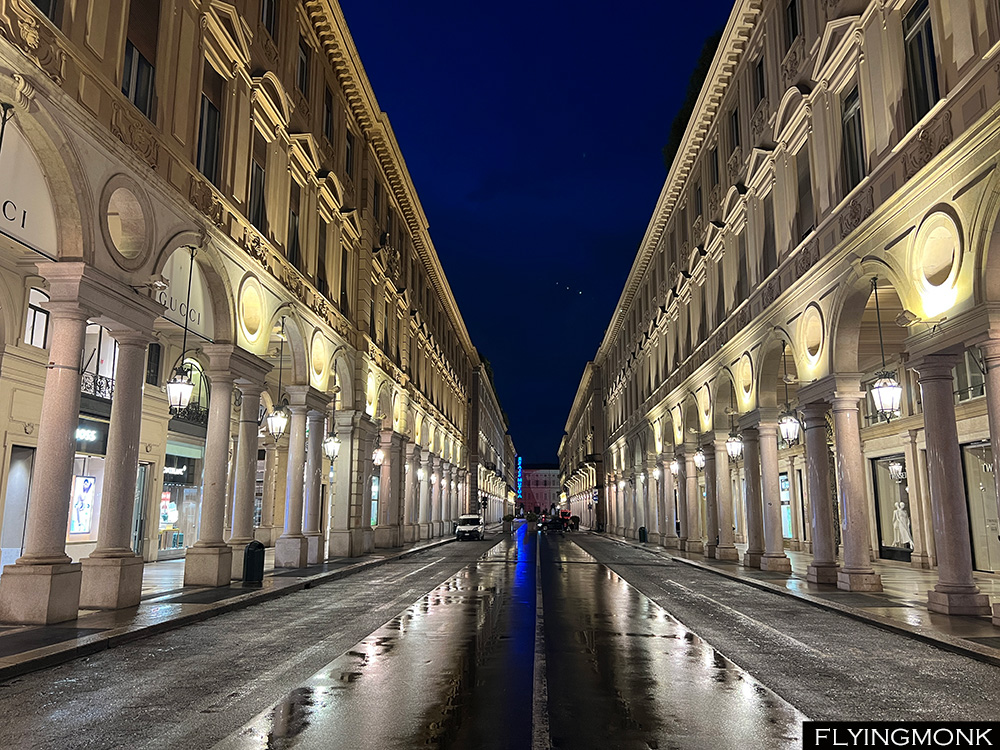
For sure these stories are way more exciting, even if they are made up, than the Italian neorealism of Torino’s factories! In any case when the rain stopped we were able to walk the streets at night where the light reflections on the wet pavement of the boulevards and squares conferred a real magic to the city. Glitter of silver and gold that may make you start believing in legends.
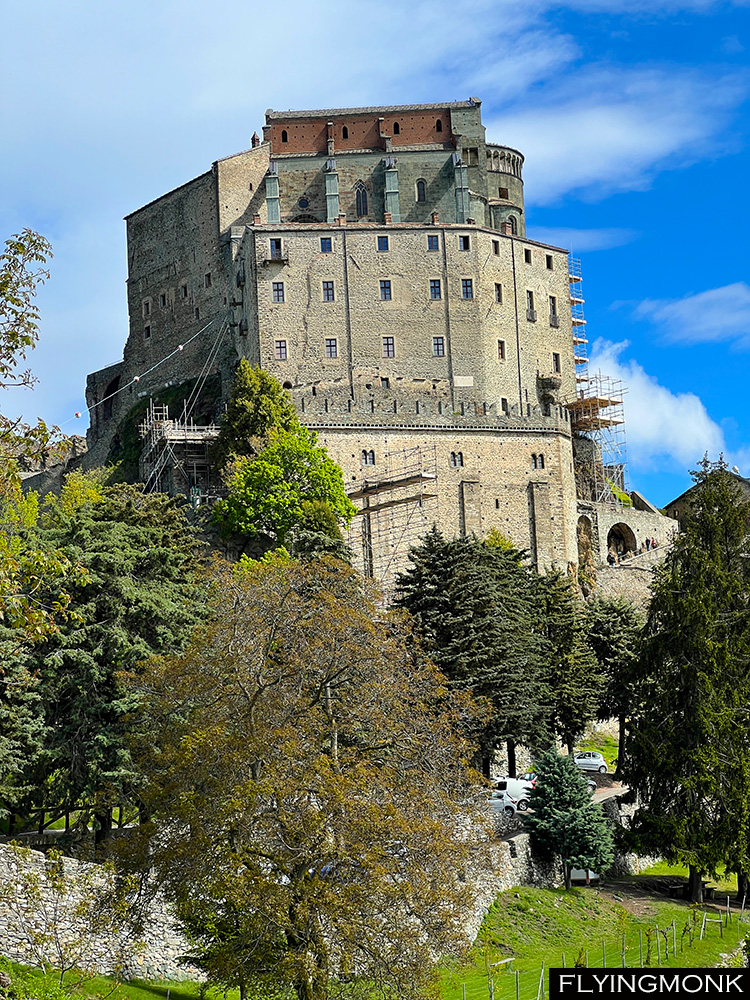
And if the above mentioned triangles seemed a bit far fetched this cannot be said about the St Michele churches that are lined up along the globe on a straight line. One of these locations is Sacra de St Michele is a religious complex on Mount Pirchiriano, close to Torino.

The Saint Michael’s Line is considered to be the Sword of Saint Michael stretched across the Christian Europe when He killed the dragon. The line links a number of monasteries and sacred sites situated on prominent hilltops, adding to their grandeur, and all dedicated to the Archangel Michael, stretching from the Holy Land across Europe.

The line starts at Stela Maris monastery on Mount Carmel, continuing through Symi island in Greece and further to Italy’s Monte San Angelo in San Giovanni Rotondo in Puglia, to Sacra di San Michele and Mont San Michel in Normandy going through England’s St Michel Mount and ending in Ireland’s Skelling Micheal. A remarkable alignment that intrigues and inspires.
